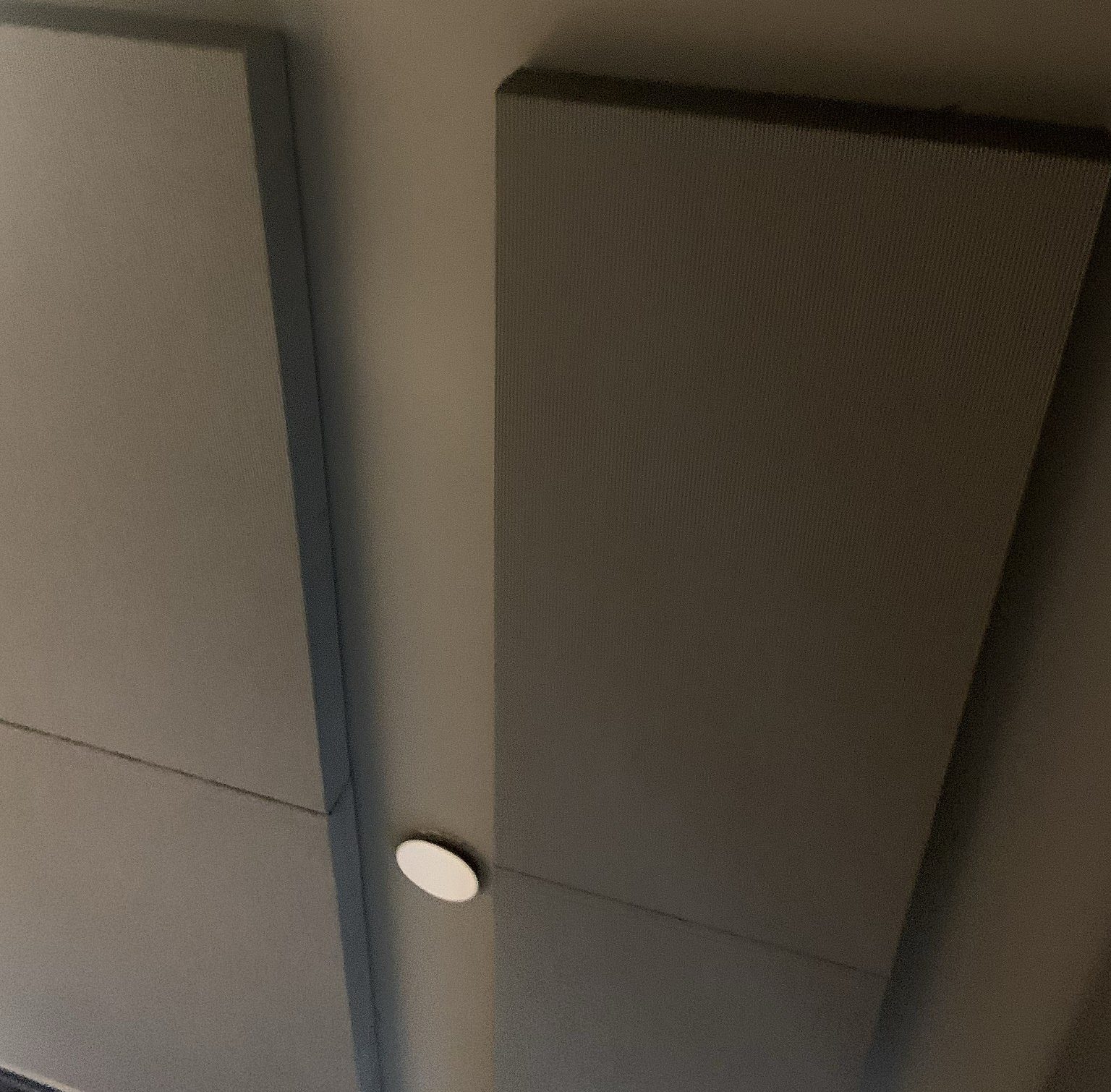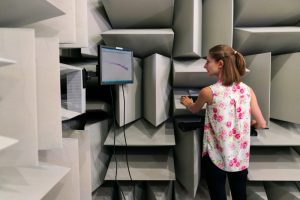Where to Place Acoustic Panels: A Guide
Hearing sound is a wonderful sensory experience. It allows us to communicate effectively, hear danger approaching, and listen to the music we love. A world without sound would be a far different experience than we’re used to. That would catch most of us off guard. But too much sound can be just as off-putting.
The places we live and work in are generally built with lots of flat surfaces. This doesn’t do any favors for the acoustics in the room. Sound waves bounce and reflect and cause echo and reverb. Learning where to place acoustic panels will give you the tools you need to tackle these audio issues before they cause problems.
The Problem with Audio Issues
You may not realize it, but many problems you encounter at home or work can be solved quite simply. When we get a group of people conversing in the same room, sound waves can reflect endlessly. This makes the room sound louder and makes communication more difficult.
When sound waves reflect off hard, smooth surfaces, they bounce back into the room. When that sound wave travels back across the room, it creates echo and reverberation. Echo is a familiar phenomenon. Those returned sound waves can be cool when you’re playing with them, but they wreak havoc on communication.
As those sound waves return and intermingle with speech, it can be hard to hear what people are saying. Not only that, but if they continue to build in the room, you’ll end up with reverb problems. It’s a classic example of too much sound in the room.
Reverb occurs when sound waves are allowed to reflect around the room without anything to absorb them. The waves mix and become louder together. As the ambient volume in the room builds, we tend to talk over it to be heard. This only exacerbates the problem. We need to absorb waves to stop audio issues at their source.
How Acoustic Panels Work
Acoustic panels are among the most popular methods when it comes to sound control. They can be used to absorb and redirect sound, and they’re easy to incorporate into any interior design scheme. Here’s how they work:
The type of acoustic panels most people are familiar with is the type made of dense foam or mineral wool. These acoustic panels absorb a wide spectrum of frequencies, preventing sound waves from returning to the room. They transform hard, reflective surfaces into dense, porous ones. Placing them in the right spots can stop runaway sound waves in their tracks.
Another type of acoustic panel is the diffuser. You may have seen them before without realizing what they were. Diffusers may be curved, angled, or created with several surfaces set at different depths. The purpose of this type of diffuser is to redirect sound waves around the room. Doing so prevents the direct reflections that cause audio chaos.
Some situations require bass traps. This is a type of acoustic panel designed specifically to counteract bass waves. Standard absorptive acoustic panels have trouble with the lowest frequencies, and those low tones make a big noise. Bass traps work by absorbing and equalizing the pressure created by bass waves. These are mostly found in spaces where music is performed or played over loudspeakers.
Now that you know more about them, let’s look at where to place acoustic panels and why it’s important.
Why Does Placement of Acoustic Panels Matter?
Acoustic panels can contribute great things to a room’s acoustics, but they have to be placed correctly. They can’t absorb what doesn’t impact them, so make sure to place panels where sound waves will find them. The more sound waves come into contact with your acoustic panels, the more effective they will be. Don’t go too crazy installing panels; however, as this can make a room sound dead. We need a mix of hard and soft surfaces to get the best sound.
Some rooms are primarily plagued by speech noise. Others may have issues with sounds created when multiple people move about. The placement of your panels should reflect your goals. Treating a home studio or theater will look different than treating an office space. Let’s take a look at commonly treated spaces and where to place acoustic panels in each.
Where to Place Acoustic Panels in Great Rooms or Living Rooms
One of the places people generally need acoustic control is in their living room or great room. It’s where people gather and it can get incredibly loud without sound control measures. The higher your ceiling, the more pronounced the audio issues will be. This is why proper placement is key to getting the results you want out of your acoustic panels.
The first place that’s important to treat is the place where speech waves strike the walls. This usually centers around the 4-6 foot range. That’s where most people’s mouths sit in space, and direct waves reach the walls at that point. You may want to go low if people mostly sit in the room, and high if they mostly stand. Centering panels at 4-6 feet absorb a good deal of waves and prevent echo and reverb from getting too distracting.
If you’ve got particularly high ceilings, it’s a good idea to mount some panels overhead as well. Since there is typically very little to absorb sounds overhead, placing panels there goes a long way. You’ve got a couple of options when it comes to choosing where to put acoustic panels.
First, you can add some panels higher on the walls. This will allow some reflections to be absorbed instead of continually bouncing around the room. But don’t forget the ceiling itself. Mounting a few panels there will change that large, flat surface into one with absorption properties. If you don’t know where to place acoustic panels on a ceiling, we’ll walk you through a few ways to incorporate them.
Panels Mounted to the Ceiling
The first option is to mount them directly to the ceiling itself. It’s simple to do and can add a little variety to your ceiling design. It will also absorb a lot of sounds created below, reducing echo and reverb. The mounting process will look very similar to installing them on walls, but it’s a little trickier. If you have particularly high ceilings or don’t feel comfortable mounting them yourself, hire someone to help.
Suspended Panels
Mounted panels can be effective, but you may find you get more bang for your buck with suspended panels. You’ve got a couple of options here as well. Two of the most effective will be ceiling clouds and a T-grid system.
Ceiling Clouds
Ceiling clouds are a very modern and effective way to absorb sound waves as they pass through space. Acoustic panels are suspended from the ceiling individually. This creates a very cool focal point that catches sound waves before they cross the room. You’ve got a lot of color and shape options, so go wild with your design ideas. You can even mount them horizontally, vertically, or at an angle. This option allows you to deliver absorption exactly where you need it.
T-Grid System
Another option for suspending acoustic panels is to use a T-grid system. You’ve likely seen them in school or office buildings. A metal grid is suspended from the true ceiling, and acoustic panels are laid into the grid. This is a great option for exposed ductwork or pipes, as it absorbs overhead sounds before they begin mixing. Keeping them from mingling with speech waves makes communication much easier.
Where to Place Acoustic Panels in a Home Office
Another spot people seek sound control is in home offices. Working from home has been a game changer for many in the workforce. Those with children, pets, or roommates, however, find it can be a bit distracting. Here’s where to place acoustic panels to quiet the office so you can concentrate.
Placing panels at mouth level works wonders here as well. A good deal of distracting sounds are going to come from speech, so absorbing those waves goes a long way. Center your panels around 4 or 5 feet off the ground. Give those panels a hand by blocking outside sounds before they enter.
You can make your acoustic panels more effective by sealing the gaps around doors and windows. The windows can be easily sealed by running a bead of acoustical caulking around the edges. Caulking will block sound from entering and remain flexible and effective for the long haul.
For the doors, try using a door seal kit with an automatic door sweep. This will seal any gaps around the door itself. That will keep household sounds from entering when you close the door. Following these few simple steps will decrease your stress levels and increase your productivity.
Where to Place Acoustic Panels in a Home Studio
Whether we’re recording music or podcasts, acoustic panels are necessary to get great sound. That makes this another common room targeted for acoustical treatments.
The flat walls in homes are not properly equipped to produce perfect sound. To get the most out of them, proper panel placement is key. Some key locations in home studios are behind the speakers, the wall opposite the speakers, and the first reflection points.
Placing panels behind the speakers will prevent immediate reflections from causing issues in your recording. Placing them opposite will help reduce echo and reverb by absorbing the most direct reflections. That brings us to first reflection points.
First reflection points can cause us to hear imperfections that aren’t in the mix. Absorbing those reflections is necessary when editing, mixing, or mastering. They’re easy to find by yourself, too. You’ll just need a helper.
Sit in the place where you usually listen to your mixes. Have your helper hold a small mirror on the side wall at your head height. Have them move it horizontally until you can see the tweeter of the speaker on that side of the room. Place a panel at that location and repeat for the other side.
Where to Place Acoustic Panels in a Home Theater
A home theater is much like a home studio when it comes to deciding where to install acoustic panels. Home theater acoustic panel placement also relies upon tackling reflection points to improve the sound. If you like to listen to movies at a loud volume, you may want to add some panels in the corners to keep the audio contained.
Bass waves tend to gather and linger in corners. Placing panels near the corners will help improve sound and keep the volume under control. A bass trap in one corner will deliver the biggest results, but you can get by with traditional acoustic panels. Place panels at the back of the side walls to get great results.
Use Quality Materials
Now that you know where the best place to put acoustic panels in each room is, it’s time to look at your options. Beyond simply knowing where to place acoustic panels, product quality is another variable that greatly affects performance.
Cheap materials may work okay but don’t expect them to work wonders. Using higher-quality materials will net you the best results. Be realistic about your expectations. Reach out to one of our reputable dealers and we’ll help you achieve your goals on budget.

















Leave a reply
You must be logged in to post a comment.